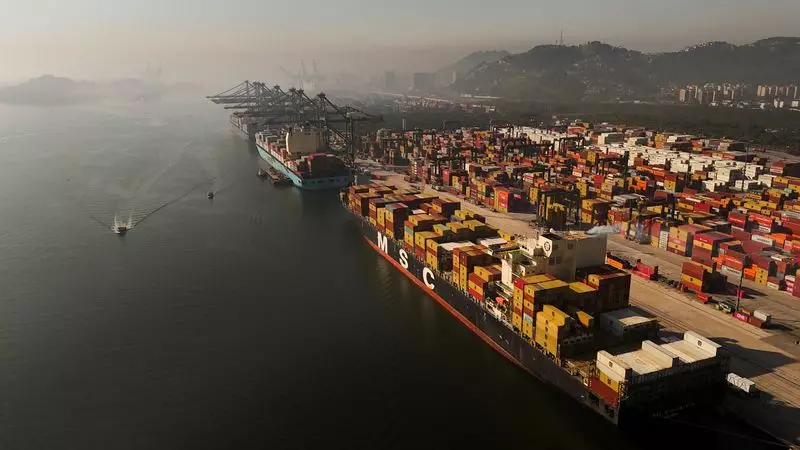Economic landscapes are often marred by conflicts that spill over into trade wars, where nations engage in tit-for-tat imposition of tariffs and trade barriers. Recently, UBS analysts have articulated the likelihood of a new trade confrontation, outlining a step-by-step examination of how it may evolve throughout 2025. Their analysis divides this process into three principal stages: the “tweet phase,” the “imposition phase,” and the “impact phase,” all of which underscore both political maneuvering and economic ramifications.
The onset of a trade war is frequently marked by rhetoric that emerges on social media platforms. Dubbed the “tweet phase,” this initial stage is characterized by high-profile declarations from political leaders aimed at galvanizing public opinion and influencing trade partner responses. Such early communications are not merely idle commentary; they serve to establish negotiating stances. As per UBS, this phase is already in motion, demonstrating how public narratives can shape trade relationships before any formal legal actions are launched. This early posturing often sets the backdrop against which subsequent negotiations and confrontations unfold, illustrating the role of perception in international trade.
Preparing for Confrontation: The “Imposition Phase”
As we progress toward 2025, UBS analysts predict the initiation of the “imposition phase,” slated to begin in the first quarter. This is where legal frameworks for tariff imposition are laid down. This phase involves procedural requirements like public reviews and drafting tariffs that will hold up under legal examinations. The intricacies of this stage highlight the complexity of international trade relations and how they require both legal precision and political will. While preliminary work on tariffs may already be gearing up, the timeline remains dependent on governmental priorities and the meticulousness necessary to implement such measures robustly.
Following the groundwork established during the imposition phase, the “impact phase” is anticipated to commence in the latter part of 2025. Here, the immediate effects of tariffs are likely to ripple through economies, compelling businesses to reassess their inventory management strategies in anticipation of disruptions. Firms might engage in preemptive stockpiling to cushion short-term economic shocks, signaling an early recognition of impending volatility. However, as UBS points out, the broader economic impacts might emerge before corporate profits reveal the extensive ramifications of new tariffs. This situation elucidates how trade decisions can set in motion a chain reaction felt across global markets long before the actual economic data emerges.
Negotiations Amidst the Turbulence
Notably, a constant undercurrent of negotiations is expected to persist throughout this tumultuous period. Trade partners will likely engage in dialogues aimed at mitigating tensions as well as devising responses to adversarial actions. The recent decisions by China to limit the export of crucial metals in retaliation to U.S. trade strategies exemplify the transactional nature of current trade policy dialogues. This volatility suggests that companies and policymakers alike must remain agile in their responses, continually adapting to the shifting nature of international trade relationships.
Market Reactions and Broader Implications
While analysts forecast both challenges and volatility, the reactions from global markets to the emerging trade environment will significantly influence the trajectory of future trade conflicts. For instance, there are growing concerns regarding the stability of emerging market currencies like the Chinese yuan. A decline in trade volumes could lead to escalated volatility, yet interventions from the Chinese central bank might act to stabilize fluctuations as seen previously. Furthermore, these trade dynamics will inevitably intertwine with broader policy considerations, such as the Federal Reserve’s approach to interest rates and the potential risk of stagflation. The delicate dance of inflation and economic growth underlines the precarious nature of the intersection between trade policy and overall economic health.
Given the outlined stages, the potential for a renewed trade war brings forth a mix of uncertainty and opportunities. As companies brace for fluctuating market conditions and potential tariff impositions, stakeholders must adopt a forward-thinking approach that combines responsiveness with strategic foresight. The evolving narrative of international trade requires vigilant monitoring, as its impacts transcend borders, ultimately shaping the economic destinies of nations around the globe. The events of 2025 may well serve as a pivotal juncture in international commerce and economics, underscoring the need for agility amidst disruption.

